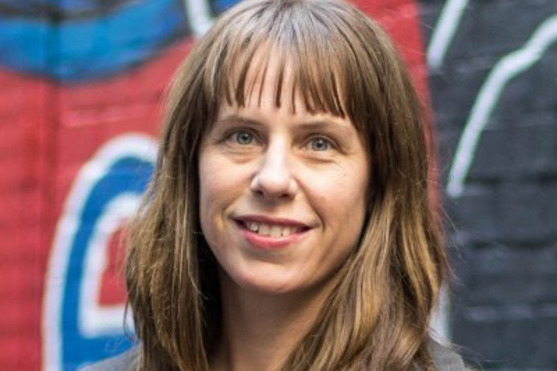
“The advice is clear – stay at home…”
There is a shortage of secure, affordable houses in Australia. We have known this for a while, but with the pandemic, this truth has become starker. Our leaders have told us to stay at home, restricted to our local communities and our houses for our safety. But what if your home isn’t safe, or you don’t have a home? And with millions struggling with job insecurity, we have seen many more come close to homelessness than ever before.
A reminder of the pre-pandemic stats. Australia has the unfortunate title of having not one, but two cities in the top five most unaffordable places to live in the world. It will now take 9.6 years for the median income household to save a 20 per cent deposit for a median home in Melbourne, based on households saving 15 per cent of their gross income. In Sydney, it will take you 11 years.
The average home purchaser is becoming older, with people renting for longer. Yet renting is deemed more precarious than home ownership, with less security and control over one’s environment. The retirement system is also designed with home ownership in mind, yet the rate of 55 to 64-year-olds who own their homes outright has fallen from 72 per cent in 1995-96 to 42 per cent in 2015-16.
For renters who derive their incomes from Centrelink benefits, renting is especially bleak. The Rental Affordability Snapshot calculates that across Australia only three per cent of properties available for rent are affordable to households on government income support payments. Social housing, once a working-class housing system, is now reserved for the most highly disadvantaged in our community. Even still, there is an enormous shortfall of social housing in Australia with estimates of an additional 727,300 units required across Australia over the next 20 years.
Housing in a pandemic
The pandemic has brought about some of the most significant policy reforms in housing and homelessness we’ve seen in the last fifty years. This is not hyperbole. Most rough sleepers across Australia have been rapidly rehoused – a feat previously deemed impossible. JobSeeker, stagnant for more than two decades, was instantly doubled. The Federal government injected funding into family violence services. Rental moratoriums were enacted ensuring that people couldn’t be evicted if they lost their jobs and couldn’t pay.
Restrictions are now easing, and yet the precarious nature of Australia’s housing system could get worse. Rough sleepers, housed in unused hotels, are still in short-term accommodation. The end date for JobSeeker and JobKeeper is looming, and after that, less people will be able to pay for their groceries, their bills, their rent or mortgage. This will be true for many, with economists forecasting an increase to unemployment levels and a recession on the way.
Building back better
So how can we take this opportunity to build back better? We know in times of economic downturn that government spending can bring an economy out of a recession. Building social and affordable housing could fuel both job recovery and provide social benefits to the community in the post-pandemic period.
A number of organisations believe building social housing should be part of a stimulus package. The Australian Council of Social Service (ACOSS) has released an economic recovery briefing, which recommends building 30,000 social housing dwellings to reduce homelessness and generate jobs. ACOSS is also advocating for governments to implement a national low-income energy productivity program, which includes investing in energy efficiency upgrades and solar PV installations for social housing dwellings. The Grattan Institute also recommends building 30,000 new social housing units, rather than funding home buyers grants as the focus of a construction stimulus package. It is unfortunate that this advice was largely ignored in the recently announced Federal HomeBuilder scheme, which the Grattan Institute called ‘lousy economics’.
Many use the 2008 GFC as an example, where the Rudd Government funded 19,500 social housing units under the Social Housing Initiative. The Community Housing Industry Association (CHIA) have detailed the case in an economic impacts of social housing report. Their modelling demonstrates how investing in a four-year social house building program of 30,000 homes will create on average up to 18,000 full-time equivalent jobs each year.
Everybody’s Home
Both ACOSS and CHIA are part of the larger group campaigning under the banner of Everybody’s Home, which has called for the creation of 500,000 social and affordable homes. Fortuitously, Everybody’s Home was established in 2018, to bring cohesion and coordination to the broader community sector’s voice campaigning for better homelessness and housing policies. It has now grown to include over 300 organisational members across the housing and homelessness sectors, local government, and other industries, and 28,000 community supporters.
Everybody’s Home also has support from the philanthropic sector. Most recently, William Buckland Foundation funded Everybody’s Home for a dedicated Campaign Manager to support their work. Other philanthropic contributors have included StreetSmart, Lord Mayor’s Charitable Foundation and the Wood Foundation.
The campaign has a five-point plan to fix Australia’s broken housing system. Apart from investment in social and affordable housing, the campaign has also advocated for broader reforms including housing tax changes, tenancy law reform, and an increase in Commonwealth Rent Assistance. Notably, the group is working to encourage a national action plan to address homelessness. This would mean all levels of government working together towards a common goal to prevent homelessness and delivering rapid access to the housing and support people need if they do lose their own home.
The pandemic has offered us a unique opportunity to reset Australia’s housing system. A failure to invest in social and affordable housing could mean an increase in homelessness now and in the future.